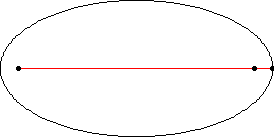@Don LucasYou don't HAVE to attach to the mid boom. You can run a line from the boom fore/aft and attach the brake to it.
Can you describe this in more detail please?
Thank you
@Don LucasYou don't HAVE to attach to the mid boom. You can run a line from the boom fore/aft and attach the brake to it.
Go to 4:45 in this video:
I'm not seeing it that way. He is illustrating that a vang is installed that way, and that a boom brake could be installed that way, but not illustrating one that IS rigged that way. Unless I'm not seeing it. Troy never says he used on a brake, only a preventer.
This, I don't get.It also shortens the travel distance of the vang or brake.
.The common recommendation is to attach the braking line from chain plate to chain plate thru the brake itself. The reasons are two. First the chain plates are two of the strongest attachment points on the boat. Second, if the boom attachment point is chosen correctly, the brake position will reside on a circle where the chain plate connections and the brake are all on the circle. This geometric result is desirable so that as the brake moves from side to side the length of the control line will remain constant eliminating the condition where the brake becomes looser or tighter as it moves.

I had a boom brake and I removed it (PDQ catamaran).I'm not interested in arguing aganist boom brakes. I've been reading off/on for a couple of days now on the subject and yet to find a story that goes "Wish I didn't have a boom brake installed." If you don't want one or believe in one that's great, but it's not the thread subject.
